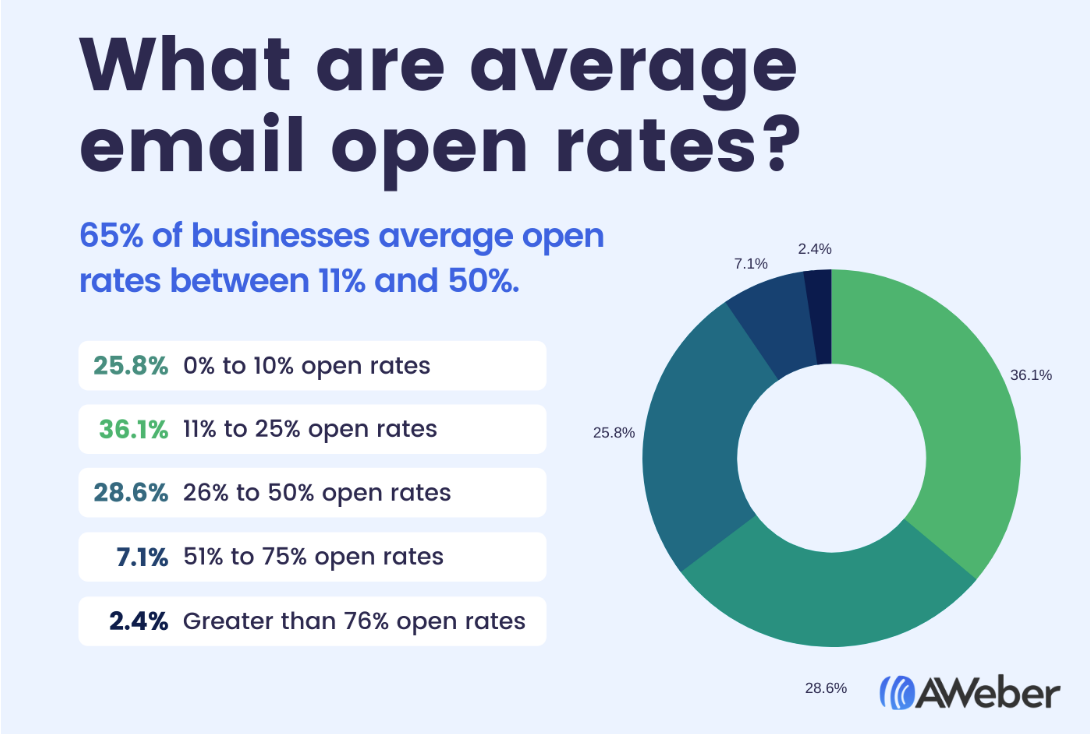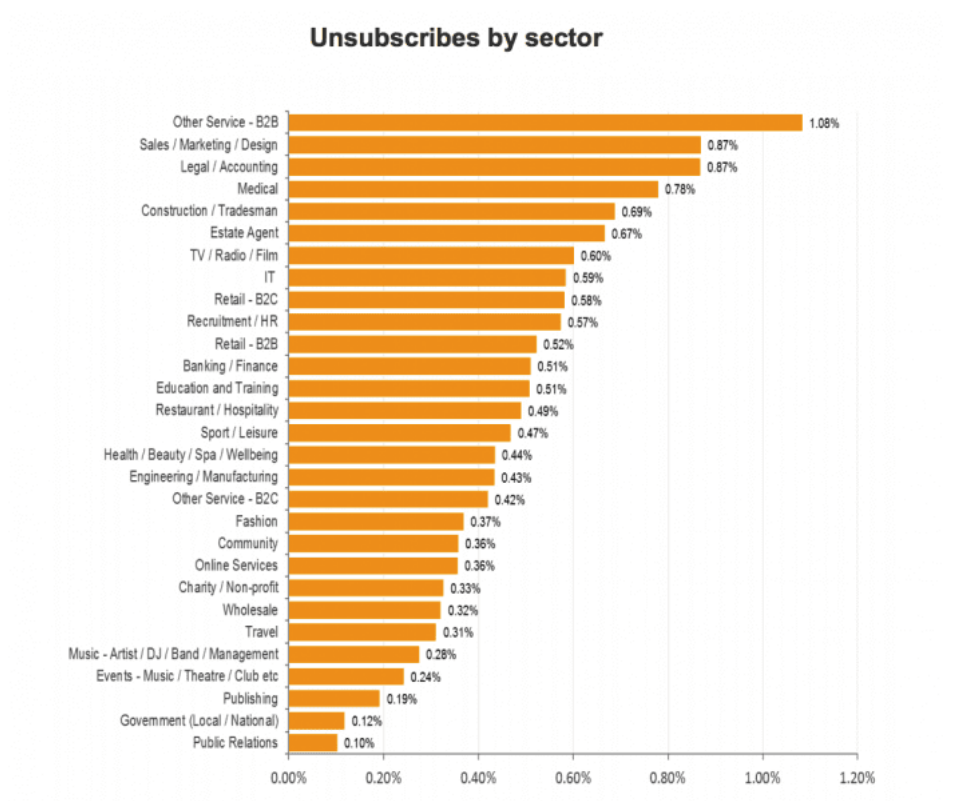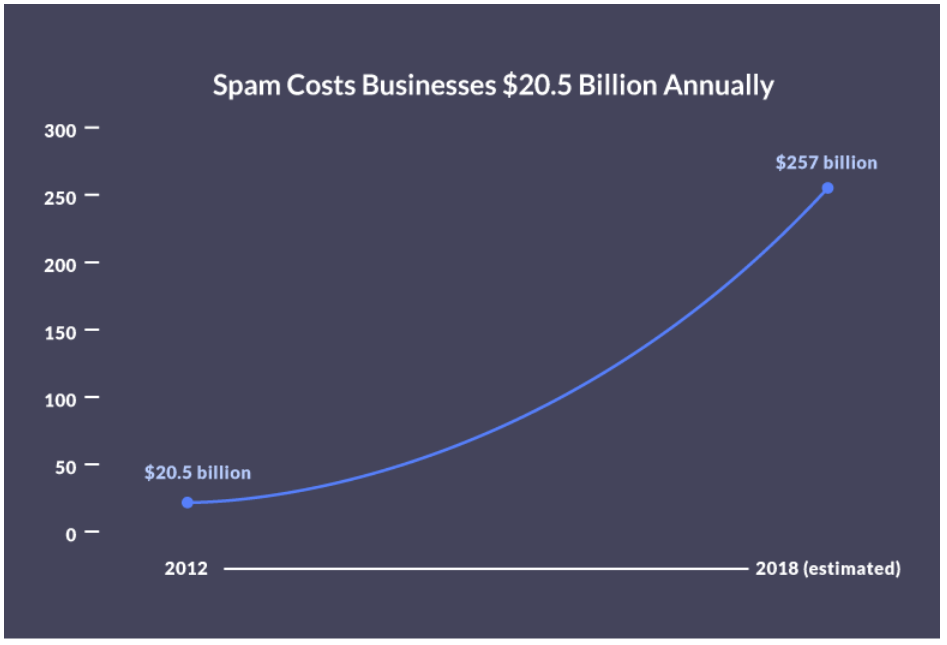Email is without a doubt the most common form of digital marketing, with 62 percent of businesses using it to retain clients and customers. That’s not surprising given how versatile and accessible email can be.
With that in mind, it pays to think about what the right email metrics are and how they should be measured in your email campaigns.
In this blog post, we’ll explore the set of metrics your business must be aware of to help guide you through creating better-performing emails.
Almost all of the metrics listed above can be seen from your email service providers. It should provide you with all the data you must know about these metrics to help you understand why your emails performed the way they did and how you can improve them.
1. Deliverability or bounce rate
Before you even worry about analyzing your performance as an email marketer, you must first ensure that your emails go straight to the inbox of your subscribers.
Deliverability or bounce rate measures the percentage of emails that reach their intended destination. So when you send an email to a recipient, it isn’t caught in a spam folder or marked as undeliverable.
For example, if you’re running an online course, the last thing you want to worry about is ensuring that members receive the emails you send. It defeats the purpose of using email marketing as part of your process.
There are lots of factors that hurt deliverability rate, namely:
- Not putting verified SPF and DKIM settings.
- Using a free email provider, i.e. Gmail, Hotmail, etc.
- Unclear or spammy subject lines.
- Too many images used in the email body.
- Lack of an unsubscribe button.
- Sending to inactive subscribers.
By making changes to your email settings, you can increase your email deliverability rate so more people can read your messages. You can also make use of multiple emails accounts to make sure that your emails are delivering properly. Apps like Shift might help you manage multiple email accounts at greater ease.
2. Open rate
Once the emails are sent, the next obstacle you must overcome is to get the recipient to open your emails, which is referred to as the open rate.
It is based on the number of actual unique opens within a given time period (e.g., 24 hours) divided by the total number of delivered messages, also known as sent emails.
The open rate of emails is important because it gives an indication of the number of people who saw and read your email.
Source: Aweber
Open rate is dependent on the effectiveness of the subject line. The more compelling your subject line is, the higher the chances of people clicking on it.
Below are eye-catching ways you can boost your email open rates:
- Add the first name of recipients in the subject line.
- Keep it shorter than 9 words and 60 characters.
- Be descriptive by calling out the benefits or mentioning specific details about the offer in your email.
- Know the best send times so more people can view your email just after sending it.
- Use emojis wisely.
To help you analyze your open rates much better, run A/B tests by creating multiple variants of your subject line for your campaign. After the test, examine which subject line had the highest open rate and why this is the case.
You can then replicate the formula you used on your next campaign while continually finding ways to improve your open rates.
3. Click-through rate (CTR)
The emails you send serve specific goals depending on which stage of the sales funnel your subscribers are. But the most common one is having a call-to-action button that brings them to a page on your site when they click on it.
Click-through rate measures how many people click on links or buttons in your email. By getting more people to click on the desired links in your emails, you help them achieve their purpose.
When measuring CTR, separate the desktop from the mobile click rate. Since a lot of people nowadays open their emails from their mobile devices, you want to track how people respond to your emails from either platform.
For example, if your given email has an average click-through rate on desktop but a low rate on smartphones and tablets, you must tweak your emails to be mobile-friendlier.
Another reason for its importance nowadays is due to SMS marketing potentially stealing away engagement from your emails.
Below are ways to help you increase CTR across your different campaigns:
- Segment your subscribers and send them hyper-relevant content.
- Make your emails viewable on any device (tablets included).
- You can have more than one CTA button or link in the email, but make sure that all of them point to the same destination.
- Make your CTAs stand out by changing their colors, sizes, and others.
4. Conversion rate
Conversion rate is the ratio of people who click on your email CTA (click-through rate) to the number of people who read it (open rate).
Interesting fact: Email is one of the channels affiliate marketers swear by. They use different tools to maximize conversions and help them generate more revenue.
If you have a 1 percent conversion rate, it means that for every 100 people who saw and clicked on an ad, only one person bought your product.
There is no baseline when it comes to conversion rate. That’s because this email metric is dependent on numerous factors such as:
- Industry
- Demographics
- Offer
Therefore, businesses in different industries have varying conversion rates. It’s just a matter of making their current rates higher than the previous one.
That said, you should launch your email campaign to determine your conversion rate. From here, use the data in your email analytics to find ways on how to improve them. Listening to your customers using Voice-of-Customers (VoC) data can often help you better leverage your email marketing strategy.
Refer to the points mentioned above regarding open and click-through rates for ideas on how to increase the performance of your emails.
5. Unsubscribe rate
The unsubscribe rate is the number of subscribers who unsubscribed in a given period. For e-commerce, this usually means the number of customers who have clicked on the “unsubscribe” link in an email.
Source: Smart Insights
A 0.5 percent unsubscribe rate per sent email is the standard, although you could always do much better if you follow the tips below:
- Ensure that email content is relevant to your subscribers.
- Lower email frequency as you may be sending too many.
- As for feedback from subscribers on what topics they want to read from you.
6. List growth rate
The list growth rate is calculated by the number of new subscribers divided by the total number of email addresses in a database. It is a measure of email list growth and how many new contacts are signing up to receive emails.
This metric pertains to your ability to drive more subscribers to your email list. Below are ways you can get more people to sign up as your email subscribers:
- Use pop-ups purposely. While exit-intent pop-ups are the most popular, try out
- Including social proof (number of subscribers, testimonials from satisfied members) is a great way to establish trust with people.
- Give something in return, i.e., free e-book, discount codes, webinar invite, to people who will subscribe to your list.
- Add ways where your audience can sign up to your list on social media, ex. Call to Action on Facebook Page, Twitter Lead Generation Card, export YouTube subscribers to your email list using different types of marketing tools, etc.
7. Inactive subscribers
One of the reasons for low open rate are inactive subscribers. They may have subscribed to you before but are not engaging with your emails for different reasons.
If you accumulate lots of inactive subscribers over time, it could also result in hard bounces which is what internet service providers (ISPs) use to determine the reputation of the sender. The higher the bounce rate, the fewer emails you can send to subscribers — if at all!
This is why having an unsubscribe link in your emails is important. While you may want people to remain subscribers as much as possible, keeping them in your list even if they don’t want to affect the overall success of your email marketing.
Also, you can send them an automated email asking them to unsubscribe from your list if they’re unhappy with the emails you’re sending. This allows you to sever ties with them on good terms. More importantly, you get to clean your list by keeping only those that engage with you.
8. Spam complaints
Spam complaints are reports that subscribers send to companies’ official email addresses, asking them to stop sending so many emails.
You will receive these reports from people if you keep sending lots of irrelevant and overly promotional email content to your subscribers. It will cost your business if you don’t curb your spammy ways.
Source: Propeller
Spam complaints also stem from having poor-quality subscribers in your list. They probably joined your list because of a giveaway or contest you ran a while back and are not interested in receiving your emails.
Considering these factors, below are the best practices to help you reduce spam complaints:
- Increase email content quality to get better reception from your subscriber even if you send multiple emails in a day.
- Send only relevant emails to your audience to avoid alienating them.
- Give an option for poor-quality subscribers to unsubscribe by including a link in your email that removes them from the list after clicking on them.
9. Sharing rate
The sharing rate refers to the number of people who forward an email divided by the total number of recipients. It is a measure of the popularity of an email campaign.
Subscribers can share your email by clicking on the forward button of their email client or social media buttons you included in the email.
This metric is ideal if you’re using email marketing for thought leadership and to help you establish your personal branding.
Understanding the sharing rate helps you create more engaging email content to subscribers.
If an email receives a higher forwarding rate than usual, you should determine the reason why and replicate it on your incoming campaigns. This way, you can attract more people to join your list and spread the good word to them.
10. Overall ROI
Overall return of investment is the amount of money you make from your campaign. Whether you have financial resources such as crypto which you can track through heatmaps or use other types of investments, it’s good to calculate and imrpove your ROI.
To calculate for it, subtract the budget spent in your campaign from the revenue gained. Then divide the difference by the campaign budget. Finally, multiply the quotient by 100.
If your made $1,000 from an email campaign worth $250 to launch, the the overall ROI is 300 percent (1000 -250 / 250 * 100).
High overall ROI can be attributed to all of the email metrics above firing on all cylinders. So if the overall ROI of your campaign is below expectations, refer to the variables above and pinpoint the reasons in your sales enablement process that caused its subpar performance.
11. Revenue per email
Unlike some of the basic metrics above, revenue per email is arguably the most important.
It is the sum of one-time and recurring revenues.
Whereas overall ROI looks at the bigger picture, revenue per email looks at which emails in your campaign are responsible for the majority of the sales or conversions coming in your business.
This metric is prevalent among e-commerce sites and entrepreneurs on their way towards financial freedom as they want to measure how effective their emails are in terms of selling their products and services.
Conclusion
There are different goals you want to achieve with email marketing. But whatever they may be, you have to measure them using the email metrics stated above.
Collecting the data of the most relevant variables to your campaign points you in the right direction by helping you understand why your campaigns are performing well or poorly. From there, use that insight to improve the performance of future emails and get better results for your business.







